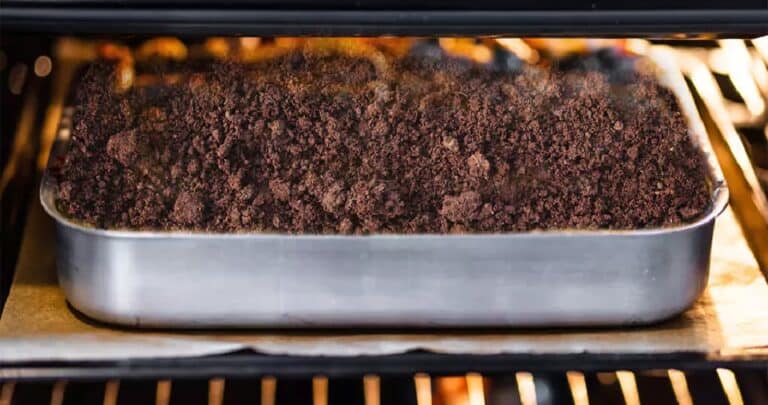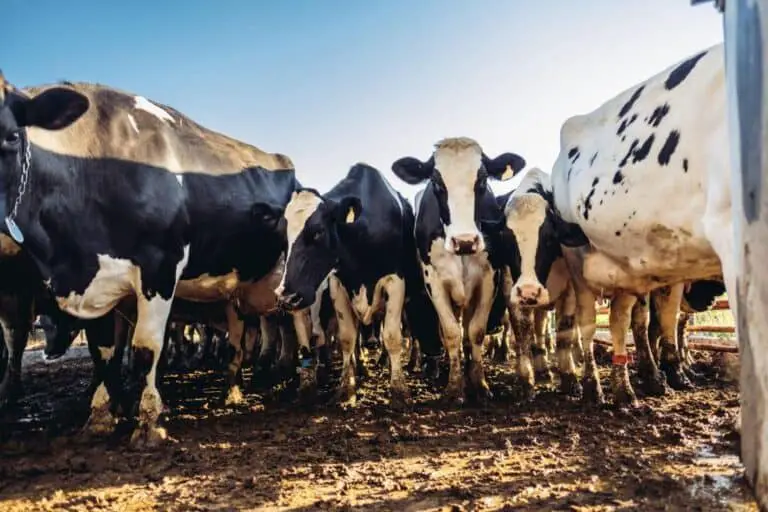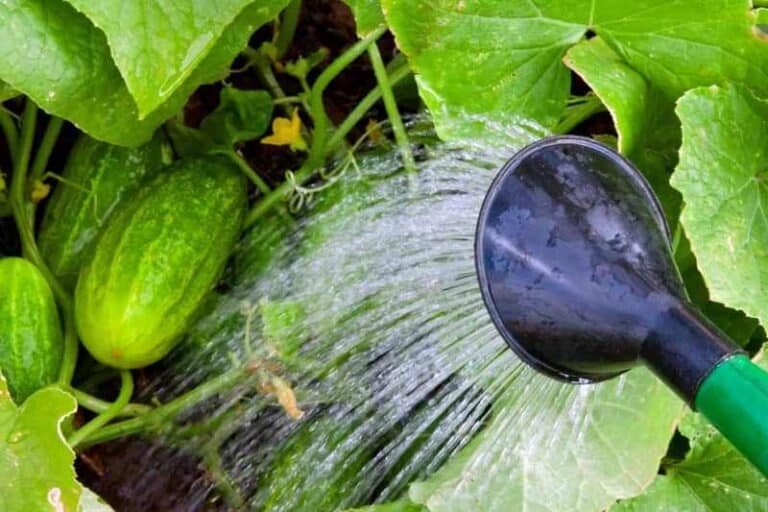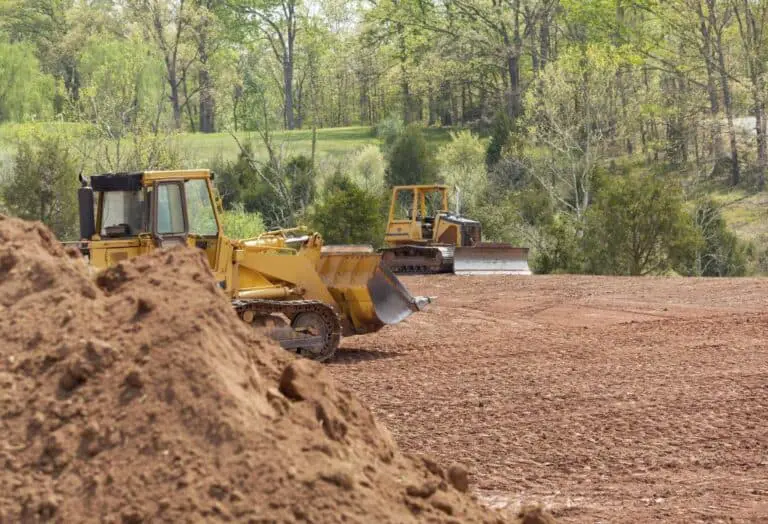Can Topsoil Get Wet or Should It Stay Dry? Soil Moisture Levels
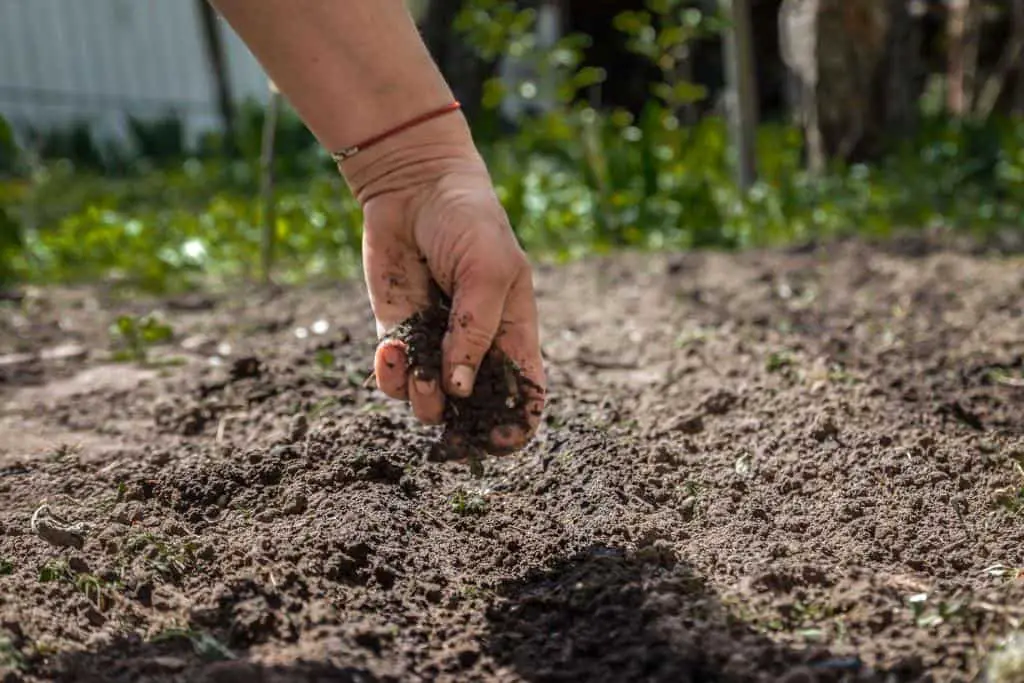
In the world of gardening and agriculture, one of the critical factors that often determines the success of your endeavors is soil moisture. Understanding the delicate balance of moisture in topsoil can be the key to nurturing thriving plants or facing disappointment in your harvest.
So, the question arises: Can topsoil get wet, or should it bask in dry serenity? For every passionate gardener, these questions are the overture to a symphony of growth and vibrancy.
In the pages that follow, we’ll delve into the depths of your garden’s soul, deciphering when topsoil should thirst for moisture, when it should revel in aridity, and how to choreograph this dance for a garden that sways to the rhythm of life. So, let’s dig in and unearth the secrets of topsoil’s waltz with moisture.
Understanding Topsoil Composition
When it comes to soil, it’s essential to start from the ground up, quite literally. Topsoil is the uppermost layer of soil, often the first 2–8 inches, depending on the location and environment.
Topsoil is a dynamic blend of mineral particles, organic matter, water, air, and microorganisms. It contains essential minerals like sand, silt, and clay, each contributing to the soil’s texture.
Here’s a breakdown of its composition:
| Component | Description |
| Mineral Particles | These include sand, silt, and clay. They determine the soil’s texture, affecting water retention and drainage. |
| Organic Matter | Comprised of decomposed plants and animals, this enriches the soil, providing essential nutrients for plants. |
| Microorganisms | A thriving community of bacteria, fungi, and other tiny life forms that contribute to the soil’s overall health. |
| Water and Air | These spaces between soil particles allow roots to access oxygen and water, which are vital for plant growth. |
Topsoil serves as the foundation for your garden or farm. Its composition plays a crucial role in supporting plant life by providing essential nutrients, anchoring roots, and regulating moisture.
The Importance of Soil Moisture
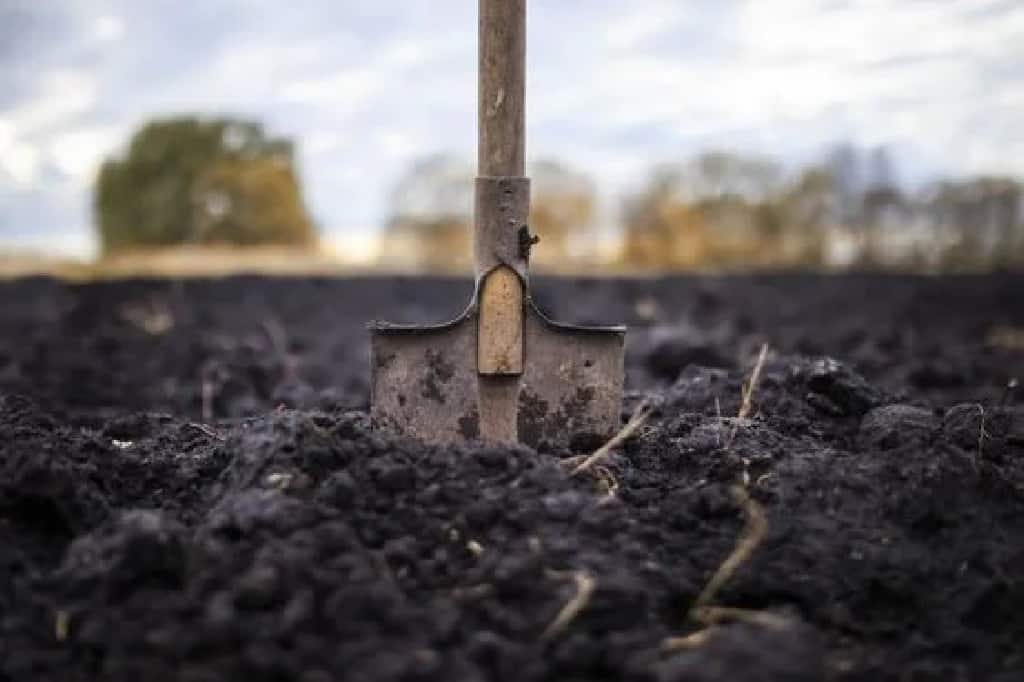
Before we dive into whether topsoil can or should get wet, it’s crucial to grasp the significance of soil moisture for plant growth. Soil moisture is the amount of water present in the soil, and it plays a pivotal role in a plant’s life cycle. Here’s why it matters:
- Nutrient Absorption: Plants rely on water to transport nutrients from the soil to their roots. Without adequate moisture, this essential process is hampered, resulting in stunted growth and poor health.
- Root Development: Adequate soil moisture promotes healthy root development. It enables roots to grow deep into the soil, providing stability and better access to nutrients.
- Photosynthesis: Water is a key component of photosynthesis, the process through which plants convert sunlight into energy. Without sufficient moisture, photosynthesis is impaired, and plants struggle to produce food.
- Temperature Regulation: Soil moisture helps regulate soil temperature, preventing extreme fluctuations that can stress plants.
- Turgidity: Moisture maintains turgidity, the stiffness of plant cells. When plant cells are plump with water, they remain upright, supporting the plant’s structure.
- Microbial Activity: Adequate moisture encourages the activity of soil microorganisms, which break down organic matter and release nutrients in a form plants can use.
- pH Balance: Moisture helps maintain the soil’s pH level, ensuring that it remains in a range conducive to nutrient uptake.
In essence, soil moisture is the lifeblood of your garden. But should topsoil remain dry, or can it get wet? Let’s explore the different scenarios.
Should Topsoil Stay Dry?
Some gardeners might think that keeping topsoil dry is the best approach. While it’s true that overwatering can be detrimental, maintaining bone-dry topsoil isn’t the solution either. Here are some cases when dry topsoil is essential:
1. Certain Succulents:
Succulent plants, like cacti, thrive in arid conditions and prefer soil that dries out between waterings. They are adapted to store water in their leaves and stems, so overwatering can lead to root rot.
2. Preventing Root Rot:
Many plants are susceptible to root rot, a fungal disease that thrives in excessively wet conditions. To prevent this, it’s crucial to allow the topsoil to dry out slightly between waterings.
3. Established Drought-Tolerant Plants:
Mature drought-tolerant plants can handle periods of dry soil. Overwatering can be more harmful than letting the topsoil dry out a bit.
However, even in these cases, it’s vital to strike a balance. Dry topsoil doesn’t mean neglecting your plants entirely. It merely implies that you should be cautious with watering and allow the topsoil to dry between waterings.
Can Topsoil Get Wet?
For most plants, topsoil should indeed get wet, as moisture is essential for their well-being. Here’s why and how to ensure adequate soil moisture:
1. Regular Watering:
Most garden plants need consistent moisture in their root zones. This means watering when the top inch or so of soil feels dry to the touch. Water thoroughly to ensure the moisture reaches the root system.
2. Mulching:
Applying a layer of mulch on top of your topsoil helps retain moisture by reducing evaporation. It also regulates soil temperature and prevents weed growth.
3. Water Retention Aids:
In sandy soils that drain quickly, adding organic matter like compost can improve water retention. Conversely, in clay soils that retain too much water, adding sand or perlite can enhance drainage.
4. Monitoring Moisture Levels:
Invest in a soil moisture meter to gauge the moisture levels accurately. This tool takes the guesswork out of watering and ensures your plants receive the right amount of moisture.
Balancing Act: Tips for Healthy Soil Moisture
Maintaining the right balance of soil moisture is key to a thriving garden. Here are some additional tips to help you achieve this:
| Tip | Description |
| Know Your Plants: | Different plants have varying moisture requirements. Research the specific needs of your plants. |
| Morning Watering: | Watering in the morning allows plants to absorb moisture during the day, reducing the risk of fungal diseases. |
| Avoid Overhead Watering: | Watering the leaves can encourage diseases. Direct water to the soil around the plant’s base. |
| Rainwater Harvesting: | Consider collecting rainwater for your garden. It’s free of chemicals and naturally at the right temperature. |
| Proper Drainage: | Ensure your garden beds have adequate drainage to prevent waterlogging. |
Natural Factors Affecting Soil Moisture
Weather and Precipitation’s Influence on Soil Moisture
Mother Nature plays a significant role in soil moisture management:
- Rainfall: Adequate and timely rainfall can maintain soil moisture, but excessive rainfall can lead to oversaturation.
- Drought: Extended periods of drought can rapidly deplete soil moisture, making it challenging to sustain plant life.
Seasonal Variations in Soil Moisture
Seasons impact soil moisture levels differently:
- Spring: Typically, soil moisture levels rise as snow melts and rain increases, making it a favorable time for planting.
- Summer: Soil moisture tends to decrease during hot summers, necessitating more vigilant watering.
- Fall: As temperatures cool, soil moisture levels may stabilize, creating a conducive environment for root growth.
- Winter: In colder regions, soil moisture can freeze, limiting plant access to water.
Soil Types and Their Water-Holding Capacity
The type of soil you have can significantly affect its moisture retention:
- Sandy Soil: Drains quickly, making it less likely to become waterlogged but requiring frequent watering.
- Loamy Soil: Strikes a balance, retaining moisture while allowing excess water to drain away.
- Clay Soil: Retains water but can become compacted and slow to drain.
In the next section, we’ll explore human interventions in regulating soil moisture, where we take control of the factors that affect soil health.
Human Intervention in Regulating Soil Moisture
Irrigation Techniques for Maintaining Soil Moisture
Irrigation is a key tool in managing soil moisture:
- Drip Irrigation: Delivers water directly to plant roots, reducing water waste.
- Sprinkler Systems: Suitable for lawns and larger garden areas but can result in water loss due to evaporation.
- Soaker Hoses: A cost-effective alternative that provides consistent moisture to the soil surface.
- Hand Watering: Provides precision control but can be time-consuming.
- Rain Barrels: Collect rainwater for later use, reducing the need for tap water.
Mulching and Its Role in Moisture Conservation
Mulch isn’t just for aesthetics; it’s a powerful ally in moisture conservation:
- Types of Mulch: Organic mulches like straw, wood chips, or compost not only conserve moisture but also enrich the soil as they decompose.
- Application: Apply mulch around plants to reduce evaporation, regulate soil temperature, and inhibit weed growth.
- Mulch Depth: Maintain a layer of mulch about 2-4 inches thick for optimal results.
More: Which Is Better for Improving Soil Quality: Topsoil or Mulch?
The Use of Soil Moisture Meters and Sensors
Modern technology offers tools to help you manage soil moisture more precisely:
- Soil Moisture Meters: Handheld devices that measure moisture levels in the soil, providing instant feedback on whether your soil is too dry or too wet.
- Irrigation Controllers: Automated systems that adjust watering schedules based on soil moisture data, optimizing water usage.
- Weather Stations: Some advanced systems integrate weather data to further fine-tune irrigation.
As you can see, human intervention plays a significant role in maintaining the ideal moisture levels for your garden or farm. But nature’s influence and the inherent qualities of your soil can’t be ignored.
Tips for Watering Garden Beds Effectively
Watering your garden may seem like a straightforward task, but it’s an art that requires finesse. Here are some tips to ensure your garden beds receive just the right amount of moisture:
- Morning Watering: Watering in the morning allows the soil to absorb moisture before the heat of the day, reducing evaporation.
- Deep Watering: Aim for deep, thorough watering rather than shallow sprinkling. This encourages deeper root growth.
- Mulch Application: Mulch around plants to reduce moisture loss through evaporation, regulate soil temperature, and deter weed growth.
- Water at the Base: Water the base of plants rather than overhead to minimize water on leaves, which can lead to fungal issues.
Container Gardening and Moisture Control
Container gardening is a popular choice for those with limited space, but it presents unique moisture challenges. Here’s how to master moisture control in containers:
- Choosing the Right Containers: Opt for containers with drainage holes to prevent waterlogging.
- Well-Draining Soil: Use potting mix designed for containers to ensure proper drainage.
- Regular Monitoring: Containers can dry out quickly, so check moisture levels frequently, especially during hot weather.
- Self-Watering Pots: Consider self-watering containers that provide a reservoir of moisture for plants.
Agricultural Practices and Soil Moisture
Sustainable Farming Methods for Moisture Conservation
Sustainable farming practices not only benefit the environment but also help conserve soil moisture:
- No-Till Farming: No-till farming reduces soil disturbance, preserving moisture and preventing erosion.
- Cover Cropping: Cover crops can improve soil structure and moisture retention.
- Crop Rotation: Varying crops in a field helps maintain soil health and moisture levels.
- Conservation Tillage: Reduced tillage minimizes soil disruption, which can lead to moisture loss.
Crop Rotation and Moisture Retention
Crop rotation is a time-tested agricultural practice that benefits soil moisture in several ways:
- Diverse Root Structures: Different crops have varying root structures, which can help maintain soil structure and moisture.
- Nutrient Cycling: Crop rotation prevents the depletion of specific nutrients, ensuring an environment conducive to moisture retention.
- Disease Management: Crop rotation can reduce the risk of soilborne diseases, which can affect moisture-absorbing roots.
Challenges of Irrigation in Large-Scale Agriculture
Large-scale agriculture presents unique challenges when it comes to soil moisture management:
- Uniformity: Ensuring uniform moisture levels across vast fields can be challenging.
- Water Resources: Large farms require significant water resources for irrigation, which may not always be readily available.
- Technology and Precision: Advanced irrigation technology, like drip systems and soil moisture sensors, is becoming increasingly important for large-scale operations.
Conclusion
In our exploration of soil moisture, we’ve ventured deep into the world of topsoil, uncovering its composition and the intricate relationship between moisture, soil structure, and nutrient availability. We’ve seen how this knowledge can be applied practically, whether in your garden or on a vast agricultural field.
We’ve delved into the challenges posed by topsoil erosion and how climate change is reshaping soil moisture patterns. However, we’ve also discovered adaptive strategies that farmers and gardeners can employ to navigate these challenges successfully.
As we look to the future, soil moisture management holds immense promise, with emerging technologies and sustainable practices paving the way for more efficient and eco-friendly approaches.
So, can topsoil get wet or should it stay dry? The answer lies in the delicate balance of moisture management, where the right amount of water at the right time ensures the flourishing of our gardens, farms, and the planet itself.

